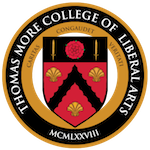This is my last “Coincidentally” Column. And so, as at the end of a dinner party, I am gathering up the crumbs. What follows are items that I have been unable to organize around a particular theme, as in my past columns, but which, when put together, make their own loaf of synchrony and concomitance. In collecting the fragments for this coincidental miscellany, I make no apology for their lack of categorization. Their eclectic character itself is their unity, and their coincidental nature is the reason I have included them.
The coincidences that you will savor below are precious because of their very randomness. Diamonds would be worthless were their supply not controlled, and so it is with coincidences. Were all of them apparent to us without their being pointed out, they would be as unremarkable as the air itself. But each coincidence, when dis-played in isolated splendor, is a jewel as brilliant and multifaceted as the 565- carat Star of India sapphire, which was stolen from the American Museum of Natural History in New York on October 29, 1961—just three years before that pioneer of brilliant light, Charles H. Townes, coinventor of the laser, was awarded the Nobel Prize in physics in 1964.
Some historical dates can provide occasions for eyebrow-raising. Here is a case in point: In 206 B.C., as the Roman general Scipio Africanus Major was expelling the Carthaginians from Spain, the Spartans were beaten back at Mantinea in their efforts to enslave the Peloponnesus, and the Han dynasty was established in China. It may be an overstatement to call this more than a coincidence, but it would be meaningless to say it was less than a coincidence. You would have to say the same about the unspeakable Japanese attack on Pearl Harbor in December 1941, 50 years after James Naismith invented the banal game of basketball in December 1891.
The population of the United States reached 200 million on November 20, 1965. This was 100 years to the day after the House Judiciary Committee recommended impeachment proceedings against President Andrew Johnson. Three years later, on May 16, 1868, eleven articles of impeachment against Johnson were submitted in the Senate. On May 26, Johnson was acquitted because the Senate fell one vote short of the required two-thirds majority to convict on each of the eleven articles—decidedly coincidentally. Johnson came close to sharing his name with Andrew Cochrane Johnston, an English adventurer who in 1807 committed fraudulent acts at Tortola and in 1814, after conspiring to rig the market on the London Stock Exchange, was impeached and expelled from the House of Commons.
Helen Keller closed her vacant eyes in death in 1968, the centenary year of Andrew Johnson’s acquittal. Among her many benefactions was the promotion of sculpture as a teaching device for the visually impaired. It is, therefore, moving to the heart and intriguing to the mind to recall that she had the same surname as Jean Jacques Keller and his brother, Jean Balthasar Keller, who cast most of the bronze statues in the royal gardens at Versailles during the reign of King Louis XIV. Unfortunately, the fountains of Versailles were not so successful as the sculptures. Although they were brilliantly engineered by a series of hydraulic pumps known as the Machine de Marley, which carried water from the Seine to the king’s gardens, and they stayed in operation from 1682 until 1804, they tended to spout sewage, which particularly offended the compensatory olfactory sensibilities of blind people. Each of the Keller brothers was born exactly 100 years before each of the two treaties of Vienna in 1735 and 1738 that agitated the blind Pope Clement XII by ignoring the status of the Papal States.
In a financial coincidence, the $25 million paid by the United States to Colombia in 1921 as compensation for the loss of Colombia’s onetime colony, Panama (the United States had been involved in Panama’s rebellion), was identical to the price the United States had paid to Denmark for its portion of the Virgin Islands in 1917. The rapacious exactions of the Colombian generals with respect to Panama provoked President Theodore Roosevelt to use a pejorative term for people of Spanish extraction. The preliminary negotiations for the Virgin Islands were begun in 1867, the centenary year of the birth of Roosevelt’s great-granduncle, Nicholas J. Roosevelt, the inventor of a vertical paddle wheel. He applied for a patent for his wheel in 1813, the birth year of Søren Kierkegaard, who wrote his Fear and Trembling for Régine Olson, the daughter of a Danish governor of the Virgin Islands.
He who is not conscious of history, if not dead, might as well be. When asked in 1892, at the age of four, how he occupied himself during fits of insomnia, little Ronald Knox (later to become one of England’s greatest Catholic converts) replied: “I lie awake and think about the past.” The same story was told of the boy George Augustus, who became King George II of England in 1727. That strange coincidence, spanning two centuries, is probably fascinating only to this writer among all the billions of people now living—which is itself a coincidence.

